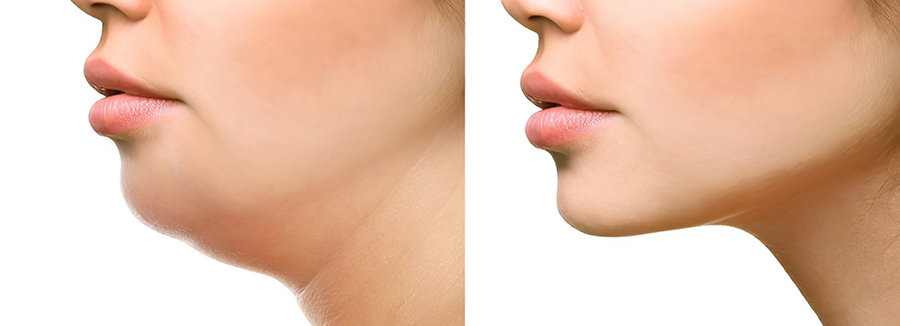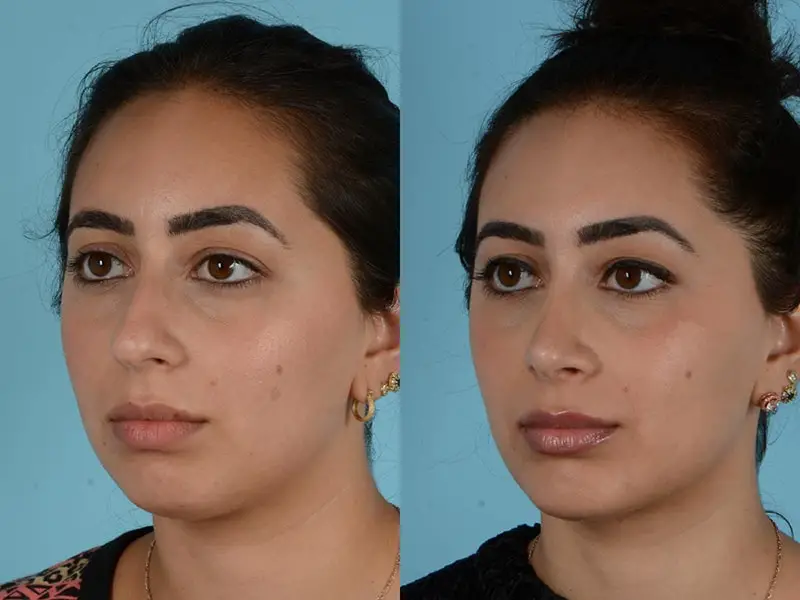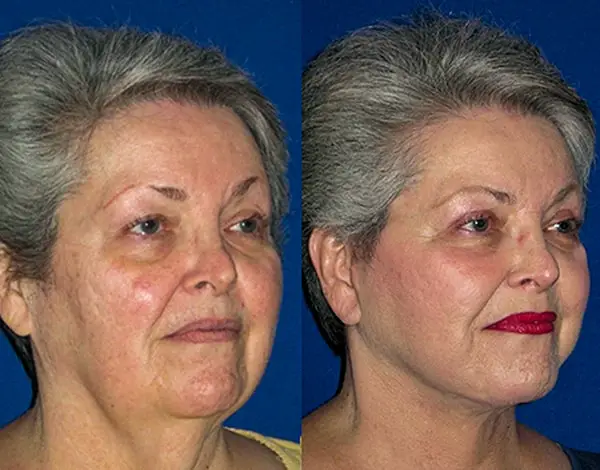
Liposuction is one of the most common cosmetic procedures available. Every plastic surgeon, no matter their specialty, should be able to do them. In 2018, there were 250,000 liposuctions set in the United States. Most people think lipo is mainly for the abdomen, thighs, and hips. But, this article will focus more on facial liposuction, its risks, and who is a viable candidate for the procedure.
Liposuction can be done on the submental region (area under your jaw) and liposuction is also possible on the cheeks.
Liposuction is probably not new to you. Most of us assume that liposuction is mainly for problem areas like the hips. But, its application goes beyond that. Today, facial liposuction is a widely available procedure. One of the main focuses of facial liposuction is in the submental area. Otherwise known as the area beneath the chin.
The submental area could have a lot of accumulated fat and can create an unattractive double chin. Lack of chin and jaw definition could also be the reason for a double chin. A more insidious cause the positioning of the hyoid bone, which we discuss in-depth here.
Liposuction can also be used for the cheeks. The idea of facial liposuction is to contour areas of the face and neck to create a more attractive appearance.
What is Facial Liposuction?
Facial liposuction works in much the same way as regular liposuction. The surgeon will still siphon out fat from the problem area, much like liposuction in the thighs and hips. The difference between facial liposuction and a regular one is the fat involved. The surgeon will remove less fat in facial liposuction. Facial liposuction will only need the removal of a few ounces of fat.
Meanwhile, fat reduction in the thighs could go up to a couple of pounds. There are different types of facial liposuction, which we will get to in a little bit. But there is always a cannula involved, which is a small tube that the surgeon inserts into the skin. They will then move it back and forth to get the fat ready for removal.

Tumescent Liposuction
Tumescent liposuction is the most common technique employed by surgeons to conduct liposuction. It involves using a solution that can break down the fat to make it easier to take out. Before, surgeons did not use fluid for fat breakdown (Venkataram, 2008). At that time, the process went by the term “dry liposuction”.
As a result, a lot of patients needed blood transfusions after the procedure. As you can imagine, that was not a desirable result, and changes were necessary. It was not until 1985 that the system got better with the use of the tumescent technique.
The technique involves injecting a specific solution made up of saline, lidocaine, and epinephrine. The solution goes through the same cannula that the fat will pass through during removal. The added solution improved the procedure and results in a higher success rate.
Tumescent liposuction remains the ideal method for liposuction. But, there are also new techniques.
Power-Assisted Liposuction
Power-assisted liposuction is a procedure that mimics the surgeon’s cannulae movement. This method allows the surgeon to not exert as much effort. It also allows complete fat removal in tight areas. But, power-assisted liposuction is only possible with large cannulae. Thus, it’s not very applicable to facial liposuction.
Ultrasound-Assisted Liposuction
Ultrasound-assisted liposuction uses ultrasound to destroy fat cells. This makes fat removal easier. The goal of the technique is to liquefy the fat. However, burns on the skin and bruising are possible side-effects of the method.
The damaged fat could also lead to small cysts filled with fluid. To add to that, it can get pretty expensive due to the added equipment necessary to get the job done. This technique may not be for everybody due to the risks and costs involved.
Laser-Assisted Liposuction
This technique also has the goal of liquefying fat like ultrasound-assisted liposuction. This process will break down the fat cells through bursts of energy and make them easier to remove.
Areas of the Face That Are Viable for Facial Liposuction
Not all parts of the face are viable for liposuction. Most patients stick to the neck, cheeks, jaw, and chin area. These areas are where there are prevalent deposits of fat that need removal.
The other areas of the face do not contain enough fat deposits for a safe procedure. But either way, the fatty areas are the problematic regions most people worry about anyway.
Liposuction in the Chin/Jaw Area
The surgeon makes an incision beneath the chin to remove fat. The incision could also be inside the mouth. The area is ideally between the gums and the lower lip. The surgeon will then insert a cannula and move it back and forth to break up the fat. The same cannula will be used to remove the fat once it has broken down.

Liposuction in the Cheeks
The cheeks are another problem area of the face. Chubby cheeks can make a skinny person look chunky. Thus, facial liposuction is a good choice for those who want a slimmer face.
Like all other liposuction procedures, the surgeon will make an incision and then break up the fat cells to suction them out. This process will take an hour or even less in some situations. But the recovery time could take a few weeks.

Some surgeons combine cheek liposuction with buccal fat removal because buccal fat removal alone does not create a satisfying contour of the face. However, this requires a very experienced surgeon. The less fat there is in an area, the higher the risk involved and skill needed. Many surgeons refuse to work on the cheeks for this reason.
Are You a Candidate for Facial Liposuction?
Although liposuction may seem like an easy answer to fat problems, it is not a solution for everybody. There are also a couple of things to consider before thinking about the procedure.
One of the most critical factors that will make you a good candidate for facial liposuction is skin elasticity.
Skin elasticity is vital in ensuring that the patient’s skin can bounce back after the procedure and look more or less the same as before. If the patient does not have elastic skin, then another cosmetic procedure to fix it will likely do the trick. However, that is an added cost that you have to factor in.
People who have underlying conditions such as heart disease should not undergo the procedure. There are risks inherent with the procedure that make it unviable for those with medical issues.
Substance use such as smoking and drinking could also affect your viability for liposuction. Make sure to consult with your surgeon about the risks you will take should you proceed with liposuction.
Unlike what most people think, liposuction is not a magic solution for fat. We see a lot of media representation seeing liposuction as a solution for weight loss. And while yes, that is true to a degree, that is not all there is to it.
A good candidate for liposuction must be near or at their goal weight before going through the process. The issue is that weight gain or loss can mess with the effects of liposuction. And if you plan on losing more weight after the procedure, you have to bring it up with your surgeon.
For example, if you gain a bunch of weight after your liposuction, your fat cells in the targeted area will be missing and it’s going to look weird.

What Are the Risks of Liposuction?
Liposuction is not without risks. Even though it is a cosmetic procedure, there are still some instances where the entire process could go wrong. In the past, for example, the risk of blood loss in liposuction was much higher.
Possible risks from the procedure include:
- Infection
- Complications from anesthesia
- Bleeding
- Burns
- Uneven fat removal
- Fat thrombosis
- Death (1 in 5000 according to Grazer et al, 2000)
If the cannula punctures the abdominal wall, it could lead to organ damage. If veins are punctured, it could lead to a fat embolism. Such risks are inherent with many procedures, but overall liposuction is safe with a board-certified plastic surgeon.


